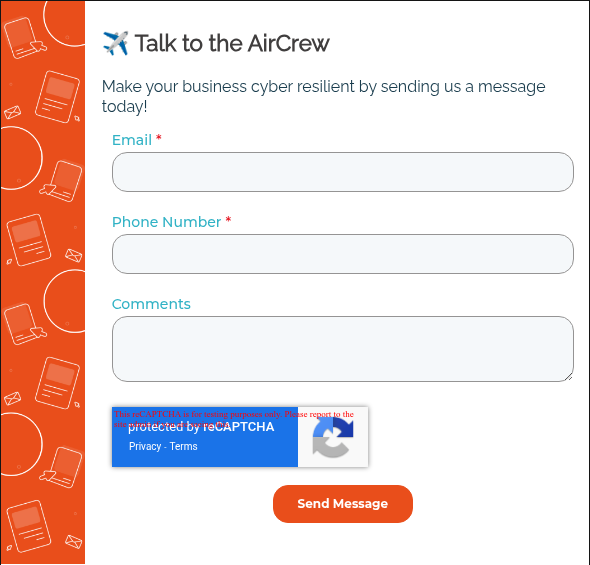Most business owners don’t launch companies because they’re passionate about server maintenance or cybersecurity patches. Unfortunately, these IT functions are non-negotiable to daily operations, and they’re getting more complex by the day.
Managed IT services let you hand over these technical headaches to specialists who handle everything from network monitoring and cybersecurity to help desk support and strategic planning. Instead of firefighting tech issues, you get proactive management from experts who prevent problems before they impact your business.
Managed IT services deliver enterprise-grade technology capabilities for small and mid-sized companies without the enterprise-grade price tag or the hassle of building an in-house team from scratch.
What Are Managed IT Services?
Managed IT services are comprehensive technology solutions where a provider takes responsibility for monitoring, managing, and resolving your IT infrastructure for a predictable monthly fee.
This proactive approach ditches the “break-fix” model where you’d call tech support only after something failed. Today’s managed service providers (MSPs) continuously monitor your systems to identify and address potential issues before they cause disruptions.
The core offerings typically include:
- Network monitoring
- Software patching
- Cybersecurity protection
- Help desk support
- Infrastructure management
Most providers handle everything from patching software and managing backups to providing strategic IT guidance and planning. It’s the value of an entire IT department at your disposal without the overhead of hiring, training, and managing a full in-house team.
This shifts your IT strategy from reactive to proactive, and your provider becomes invested in preventing problems rather than just fixing them after the fact.
Key Benefits of Managed IT Services
Managed IT service providers deliver advantages beyond just fixing traditional technical problems. Here’s how these services can help:
- Predictable IT costs: Replace unpredictable emergency expenses with a consistent monthly fee that covers most or all of your technology needs.
- Improved security posture: Gain access to enterprise-grade security tools, 24/7 monitoring, and specialized expertise that would be prohibitively expensive to implement in-house.
- Reduced downtime: Proactive maintenance and monitoring identify and resolve potential issues before they impact your operations, keeping your business running smoothly.
- Access to specialized expertise: Tap into a diverse team of specialists with experience across multiple technologies and industries without having to hire them individually.
- Scalability on demand: Easily adjust resources up or down as your business needs change without the lengthy hiring or downsizing processes.
- Strategic advantage: Free up internal resources to focus on revenue-generating activities while your MSP handles the complex technical backend.
- Business continuity: Implement robust backup and disaster recovery systems that protect your data and guarantee quick recovery from unexpected events.
Managed IT vs. In-House IT: What’s the Difference?
There are some subtle advantages (and disadvantages) between the two that you might notice at a glance, so let’s show it to you side-by-side:
| Factor | In-House IT | Managed IT Services |
| Cost Structure | Fixed salaries, benefits, training, hardware/software expenses | Predictable monthly subscription based on services and users |
| Expertise | Limited to hired staff’s knowledge | Access to diverse specialists across multiple domains |
| Availability | Typically business hours, limited after-hours support | 24/7/365 monitoring and support |
| Scalability | Requires hiring/firing to scale up or down | Easily adjustable based on changing needs |
| Technology Access | Limited by budget for tools and software | Enterprise-grade tools included in service package |
| Focus | Split between maintenance and strategic projects | Primarily proactive and strategic |
Many businesses today opt for a hybrid approach by combining in-house IT staff for day-to-day needs with specialized managed services for complex functions.
Ultimately, the major differences come down to:
- Cost efficiency: Managed IT typically costs 30-50% less than maintaining equivalent in-house capabilities (especially for small to mid-sized businesses).
- Breadth of expertise: Instead of relying on a handful of generalists, managed IT provides access to specialists in networking, security, cloud services, and more.
- Business continuity: Managed IT eliminates single points of failure in your technical support by guaranteeing consistent coverage regardless of vacations, illness, or staff turnover.
- Technology evolution: MSPs continuously update their tools and expertise to help your business benefit from the latest innovations without additional investment.
Are MSPs for Small Businesses?
Really, small businesses stand to gain the most from managed IT services. Without enterprise-level resources, SMBs face the same cyber threats, compliance requirements, and technical complexities as larger organizations…but with much fewer resources to address them.
60% of small businesses that experience a significant data breach close within six months. Managed IT services aren’t just an operational convenience—they’re essential for small business survival and growth.
Here’s why managed IT services are for small businesses:
Limited IT budgets go further
For the cost of one full-time IT employee, small businesses can access an entire team of specialists with diverse expertise. This transforms IT from a financial burden into a strategic asset that scales with your business.
Enterprise-grade security becomes accessible
Cybercriminals increasingly target small businesses, knowing they typically lack advanced defenses. MSPs provide the same security tools and expertise used by larger companies at a fraction of the cost of implementing them independently.
Technology becomes a competitive advantage
With an MSP handling day-to-day IT operations, small business leaders can focus on leveraging technology to improve customer experiences and operational efficiency (rather than just keeping the lights on).
Compliance becomes manageable
Many small businesses struggle with complex regulatory requirements like HIPAA, PCI, or industry-specific regulations. MSPs specializing in your industry bring the expertise to guarantee compliance without the extensive research and implementation challenges.
The reality is stark:
How to Choose the Right Managed IT Services Provider
Not every MSP will be the right partner for your business, and that’s why you need to do your due diligence before committing to a service. Your partner will have access to your most sensitive business systems and major impact on your operations.
- Start by evaluating their response time guarantees and checking if they’re realistic for your business needs. A provider offering 15-minute response times might sound impressive, but verify they have the staff to deliver consistently.
- Examine their security credentials and practices. Your MSP should exceed the security standards they’ll implement for you. Ask about their own data protection measures, employee background checks, and security certifications.
- Look for industry-specific experience, especially if you operate in regulated sectors like healthcare or finance. An MSP familiar with your compliance requirements will identify risks others might miss.
- Consider their service scope. Some providers are great at cybersecurity but offer limited help desk support, while others might provide comprehensive coverage but lack specialized expertise. The right fit depends on your specific gaps and priorities.
- Trust your instincts during consultations. The best MSP relationships often span years, so choose a provider whose communication style and company culture align with yours.
Make the Right Choice with Airiam’s Managed IT Solutions
Technology should power your business growth, not slow it down with constant issues and unexpected costs. Airiam’s managed IT solutions deliver enterprise-grade technology management that keeps your systems secure, optimized, and aligned with your business goals.
Our AirCTRL managed services provide comprehensive support that eliminates technology headaches while reducing overall IT costs. Whether you need complete IT department outsourcing or co-managed support alongside your existing team, our solutions scale to fit your exact requirements.
What sets us apart is our unique expertise in both cybersecurity and IT management. With over 50,000 hours of incident response experience, we’ve seen firsthand how proper IT management prevents costly breaches. This dual perspective guarantees your systems aren’t just operational—they’re actually secure.
Small changes in how you manage IT today can prevent major disruptions tomorrow. Want to transform technology from a constant worry into a competitive advantage? Contact our team today for a no-obligation assessment of your current IT environment and see how Airiam’s managed IT solutions can support your business goals.
Frequently asked questions
Q: What’s the difference between managed IT services and just calling tech support when something breaks?
Managed IT services proactively monitor and maintain your systems to prevent issues before they cause disruptions. Traditional break-fix support only addresses problems after they’ve already impacted your business. With managed services, you get continuous monitoring, regular maintenance, strategic planning, and predictable monthly costs instead of unexpected emergency expenses (which are always more expensive).
Q: How much do managed IT services typically cost?
Most managed IT service providers charge per user or per device, typically ranging from $100-$200 per user monthly depending on the level of service. This predictable fee replaces unpredictable emergency IT expenses, software licensing costs, and often reduces the total cost of technology ownership by 25-45% compared to maintaining equivalent in-house capabilities.
Q: Can I keep some IT functions in-house while outsourcing others?
Absolutely. Many businesses adopt a co-managed IT approach, keeping certain functions internal while partnering with an MSP for specialized expertise or after-hours coverage. Airiam’s flexible service models adapt to complement your existing IT resources rather than replace them.
Q: How quickly can I expect a response when there’s an issue?
Reputable MSPs outline specific response times in their service level agreements (SLAs). Airiam’s support team responds to critical issues within 15 minutes, with resolution times varying based on the complexity of the problem.
Q: Will managed IT services work if we have multiple locations or remote workers?
Yes. Modern managed IT services are specifically designed for today’s distributed workforce. Cloud-based management tools allow for effective monitoring and support regardless of physical location, making managed services particularly valuable for businesses with multiple offices or remote team members.
Got questions? We have answers.


